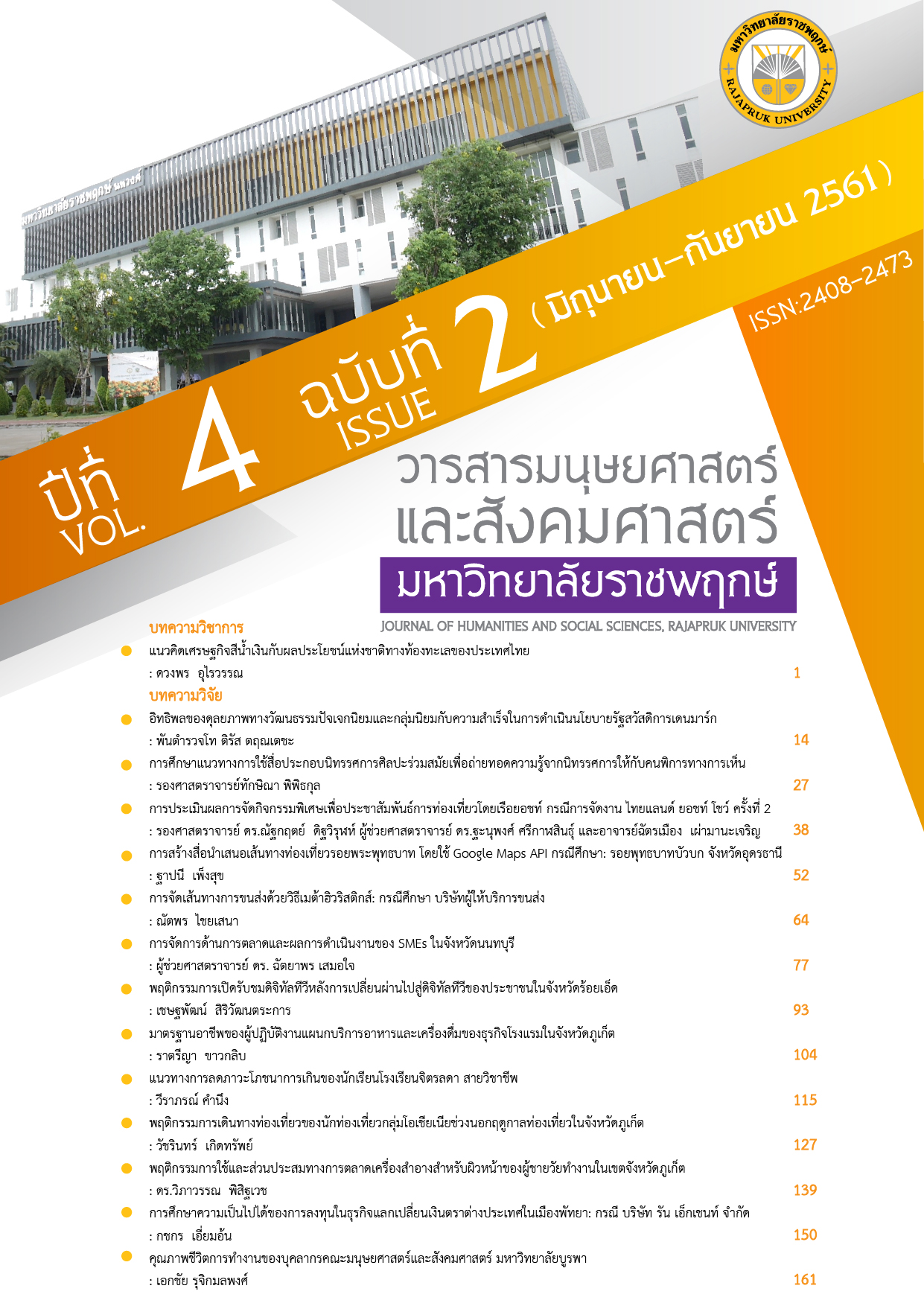Behavior of Exposure Digital Television Transition of Roi Et Audiences
Main Article Content
Abstract
The purpose of this research was to investigate the behavior of exposure digital television of Roi Et audiences. The samples for surveying the opinion were 400 people in Roi Et province who exposed digital television, derived form accidental sampling. The research was quantitative and used a questionnaire as an instrument. That data was analyzed by frequency, percentage, mean; and hypothesis based on inferential statistics which consist of One-way ANOVA.
The study was reveals that; The most of Roi Et audiences watched digital TV through satellite system at home with 46.3 percent (185 people) and consumed programming TV on evening (6 pm - 9 pm) with 41.3 percent (165 people). The mostly Roi-Et audiences watched digital TV to know current events shows with 51 percent (204 people). They consumed general programs and the variety show with 34.5 percent (138 people) both standard-definition television (SD) and High definition television (HD).
The difference of education background of Roi Et audiences leaded to differ from watching behaviors and accessing channels to exposure digital TV, with different by the statistical significant at the level of .05.
Article Details
References
เชษฐพัฒน์ สิริวัฒนตระการ. (2559). การสร้างความเข้าใจและศึกษาผลกระทบเกี่ยวกับการยุติโทรทัศน์ระบบแอนะล็อกต่อผู้บริโภค จังหวัดร้อยเอ็ด. วารสารมนุษยศาสตร์และสังคมศาสตร์ มหาวิทยาลัยราชพฤกษ์, 2(2): 66 – 77. ค้นเมื่อ 20 กุมภาพันธ์ 2561, จาก https://www.tci-thaijo.org/index.php/rpu/article/view/112413/87600.
ปรมะ สตะเวทิน. (2539). การสื่อสารมวลชน:กระบวนการและทฤษฎี. พิมพ์ครั้งที่ 3. กรุงเทพฯ: ห้างหุ้นส่วนจำกัดการพิมพ์.
สำนักวิศวกรรมและเทคโนโลยีกระจายเสียงและโทรทัศน์. (2559). การยุติการออกอากาศแอนะล็อกทีวีของประเทศไทย [ออนไลน์]. ค้นเมื่อ 21 กุมภาพันธ์ 2560, จาก https://www.facebook.com/Broadcast.Engineering.NBTC/photos/a.923218557740949.1073741828.923197744409697
Atkin, Charles K. (1973). Anticipated communication and mass media information seeking. New York: Free Press.
Broadcasting Technology and Engineering Bureau, Office of NBTC. (2017). Termination of Analogue Television System in Thailand. Retrieved February 21, 2017, from https://www.facebook.com/Broadcast.Engineering. NBTC/photos/a.923218557740949.1073741828.923197744409697/1018508084878662/?type=3&theater (in Thai)
Klapper, J. T. (1960). The effects of mass communication. New York: The Free Press.
Satawetin, P. (1996). Mass Communication : Process and Theory. Bangkok: Hanghunsuanjumkadkarnpim. (in Thai)
Siriwatthanatrakarn, C. (2016). Understanding and studying the effects of termination of analogue television system toward Roi Et consumers. Journal of Humanities and Social Sciences Rajapruk University, 2(2): 66-57. Retrieved on February, 20th, 2018, from https://www.tci-thaijo.org/index.php/rpu/article/
view/112413/87600 (in Thai)
Vasinsunthon, J. (2015). Media exposure and satisfaction in the situations changing with Digital TV of audience in 4 navigable province. Chiang Mai Rajabhat University.


